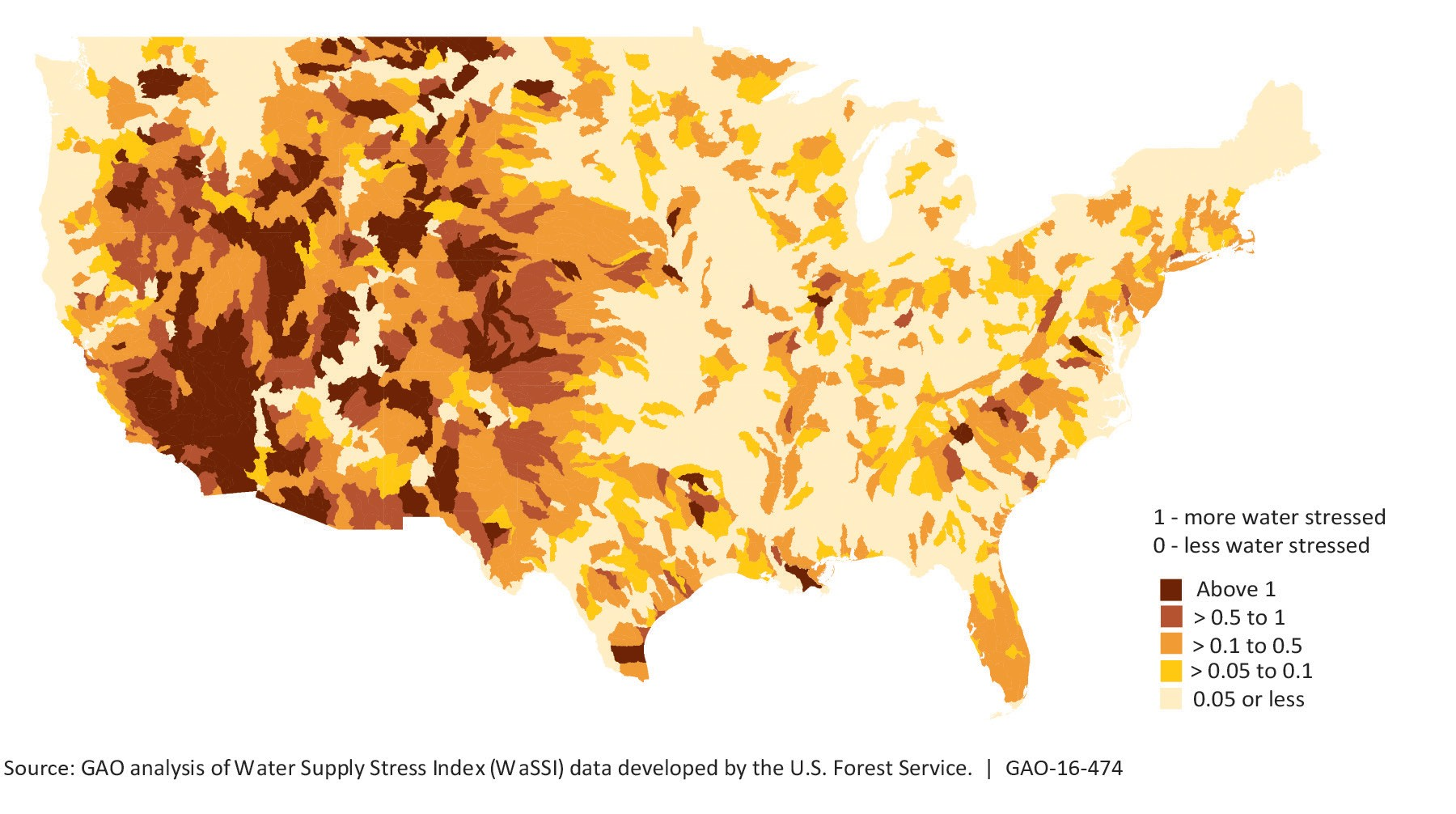Technology Assessment: Municipal freshwater scarcity: Using technology to improve distribution system efficiency and tap nontraditional water sources
Highlights
What GAO Found
Water scarcity occurs when the demand for water in a given area approaches or exceeds available water supplies. A water utility facing scarcity may attempt to address it by reducing its demand on existing water supplies, increasing its water supplies, or both. Many mature technologies are available to address both of these areas. For example, a utility could try to improve the efficiency of its distribution system in order to reduce its demand on existing water supplies. Utilities can choose from wide variety of mature technologies to detect leaks, manage pressure, meter water flow, and assess the condition of pipes. Similarly, a utility may be able to increase supplies through choosing from many mature technologies that are available to treat nontraditional water sources such as seawater, brackish water, treated municipal wastewater, or storm water captured from developed surfaces.
Based on GAO’s nationwide survey of municipal water utilities, the percentage of utilities that treat nontraditional water sources for municipal use varies significantly across the United States. According to GAO’s statistical analysis, much of this regional variation can be explained by differences in underlying utility and watershed characteristics. In particular, very large utilities, utilities serving water-stressed areas, and utilities that manage additional services such as wastewater or storm water services are most likely to treat nontraditional water sources for municipal use. GAO also analyzed survey data regarding the challenges that municipal water utilities face in treating nontraditional water. The results of that analysis suggest that utilities that have experience treating nontraditional water sources find it easier to address financial, regulatory, and other challenges than utilities that have only studied the feasibility of doing so.

Average 30-year water stress levels in the contiguous United States (1981-2010).
Why GAO Did This Study
Of all municipal services, providing a safe and adequate supply of water is perhaps the most essential. Reports about lead-contaminated drinking water in Flint, Michigan and ongoing drought in several regions of the United States highlight some of the challenges water utilities are facing. In times of shortage, conflicts over limited freshwater resources—including for irrigation, power production, and municipal water use—increase. Further, freshwater shortages are expected to continue into the future.
GAO was asked to conduct an assessment of technologies that could help municipal water utilities address water scarcity. This report examines (1) technologies that could reduce demand on freshwater supplies by improving distribution system efficiency; (2) technologies that could increase water supplies by using nontraditional water sources; and (3) locations and types of water utilities where these technologies are most commonly adopted.
GAO reviewed scientific literature and key reports; interviewed experts; visited water utilities, national laboratories and research facilities; convened an expert meeting with the assistance of the National Academies; and conducted a representative survey of municipal water utilities. Five federal agencies and 13 experts reviewed the draft report and some provided technical comments, which were incorporated as appropriate.
To view the e-supplement online, click on GAO-16-588SP. For more information, contact Timothy M. Persons at (202) 512-6412 or personst@gao.gov.
